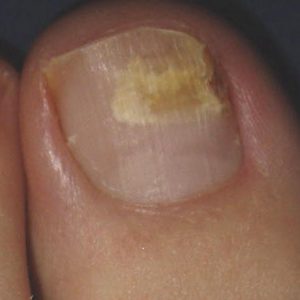What are the Most Common Fungal Problems?
 The fungal problems seen most often are athlete’s foot and fungal nails. A fungus is a common mold that thrives in dark, warm, moist areas. On the feet, it can grow on and between toes, as well as on soles and toenails. Fungal problems can be a result of environment (socks, shoes, heat, and humidity) or weakened immunity (diseases such as diabetes). If fungal infections are untreated, they can develop into serious secondary bacterial infections, which may require antibiotics to treat.
The fungal problems seen most often are athlete’s foot and fungal nails. A fungus is a common mold that thrives in dark, warm, moist areas. On the feet, it can grow on and between toes, as well as on soles and toenails. Fungal problems can be a result of environment (socks, shoes, heat, and humidity) or weakened immunity (diseases such as diabetes). If fungal infections are untreated, they can develop into serious secondary bacterial infections, which may require antibiotics to treat.
Athlete’s Foot
A chronic infection caused by various types of fungus, athlete’s foot is often spread in places where people go barefoot, such as public showers or swimming pools. The condition ranges from mild scaling and itching to painful inflammation and blisters. It usually starts between the toes or on the arch and may spread to the bottom and sides of the foot.
Fungal Nails
These are often caused by the spread of fungal infections like athlete’s foot, or by the use of artificial nails or nail polish. Injury to the nail may be another cause. Fungal nails may become thickened, inflamed, or sensitive, and turn unnatural colors.
Evaluation
Since fungal problems may be related to other medical problems, your podiatrist needs to look at your medical history, examine your foot and skin, and possibly do other tests.
Medical History
Your podiatrist asks you about any problems you’ve had in the past, any medications you’re taking, the type of work and activities you do, and the style of shoes you usually wear.
Exam
During your foot examination, your podiatrist checks for breaks in the skin, growths, and odor (which may be a sign of bacteria). Your skin is examined for flaking or scaling and your nails are checked for color, thickness, and inflammation.
Tests
Your podiatrist may take a culture (sample) from the infected area. The culture may be examined under a microscope or observed in a medium. These tests can help to determine the cause of you problem or identify the type of fungus.
How are Fungal Problems Treated?
Depending on the type of infection you have, various kinds of medication may be used in treating your fungal problem. Successful treatment usually involves a combination of medication and self-care.
Athlete’s Foot
If your condition is not serious, over-the-counter and prescription powders, lotions, or ointments can often help treat scaling, itching, and inflammation. Foot soaks may help dry excessive perspiration, but talk with your podiatrist first. If your athlete’s foot doesn’t improve, your podiatrist may prescribe stronger medication.
Fungal Nails
Since fungal nails are usually more resistant and more difficult to treat than athlete’s foot, topical or oral antifungal medications may be prescribed. Secondary bacterial infections may require antibiotic treatment. Debridement may be suggested and involves trimming, filing, or grinding away the diseased part of the nail. Permanent nail removal is another possible form of treatment.
What Can I Do About Fungal Problems?
Your daily habits play a big part in helping to prevent fungal problems. Follow the suggestions below, and see your podiatrist if you have more problems.
Dry Carefully
Always dry your feet thoroughly after you bathe or shower. Be sure to dry between your toes. Foot powders can also help absorb moisture.
Alternate Shoes
To help avoid fungus-causing perspiration, alternate the shoes you wear so they have at least a day to dry out. Also try to wear shoes made of breathable materials like leather or canvas.
Change Socks
Ask your podiatrist what kinds of socks are best for you. And change them often.
Beware of Bare Feet
Wear sandals or thongs in public areas such as pools, showers, or locker rooms.
